The “Folkets House” in Malmö will be an Opportunity Space for job-seeking refugees and longtime residents
By Justine Testado|
Wednesday, May 10, 2017

Related
As many countries continue to face social and political obstacles, promoting the value of inclusion as a city is crucial as ever. In this spirit, the Van Alen Institute along with the City of Malmö, White Arkitekter, Skanska, Individuell Människohjälp, and Architects Sweden launched the “Opportunity Space” flash competition. The global design-build competition sought the best proposal for a temporary pavilion called the Opportunity Space, which will host a summer program of daily events that will help refugees and longtime residents learn skills, find jobs, and make connections.
Almost 300 teams from 45 countries pre-registered. The winning commission went to the “Folkets House” (“People’s House”) designed by a team comprising Rik Ekström of ARExA (New York, NY); Gustav Fagerström of Walter P Moore (New York, NY); Milad Barosen of the Milou Group (Stockholm, Sweden); and Nathan King of the Virginia Tech School of Architecture + Design, Center for Design Research (Blacksburg, VA). The team will be in charge of the design and implementation of the pavilion in time for the Opportunity Space Festival in August, with installation support from Skanska Öresund.
Read on for more about the proposal.
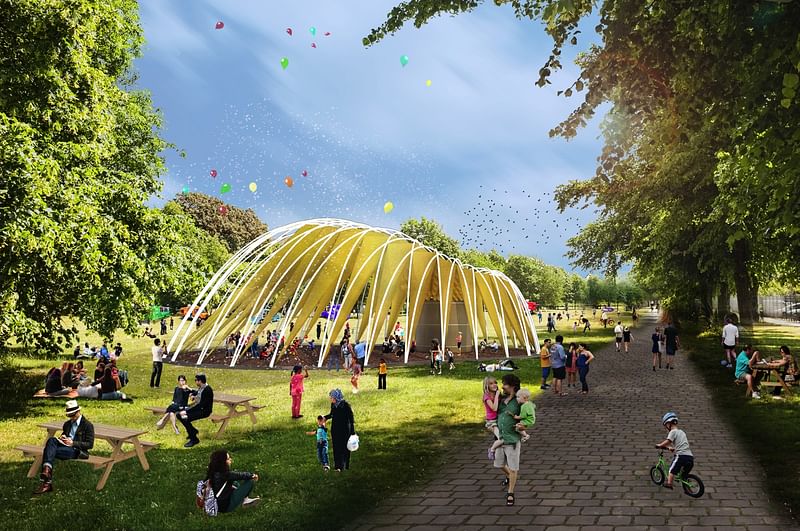
“‘Folkets House’ refers to Swedish labor union buildings that originated in the 19th century as venues for public meetings and cultural activities. Drawing inspiration from these open, democratic spaces, the winning team proposed an iconic prototype for temporarily activating public space to address the challenges and opportunities of 21st century cities.”
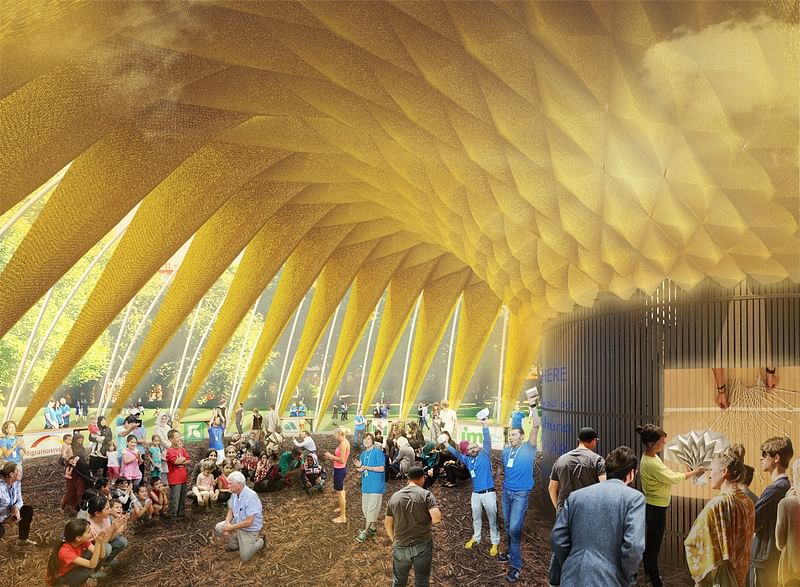
As Malmö rapidly grows and diversifies, the city is considered an ideal place to explore issues of social and economic inclusion that many cities face today. “It was also the point of arrival for the vast majority of refugees and asylum seekers settling in Sweden — up to 10,000 a week at its peak in autumn 2015,” Van Alen Institute describes.
“At the same time, Malmö’s longtime residents face challenges finding work in today’s global economy. Analysts estimate that the average age at which Swedish residents find their first ‘real’ job (for instance, one that would allow them to qualify for a mortgage) is 29, and that it takes new arrivals up to seven years before they are gainfully employed.”
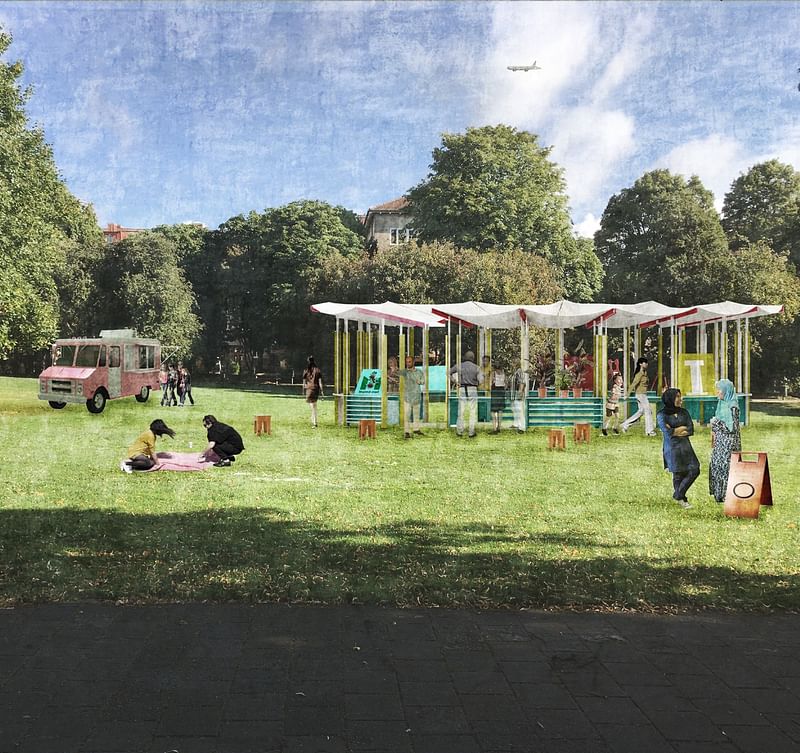
“Folkets House was the clear winner; the proposal succeeds in combining dignity and place-making, two of the main outcomes we want for Opportunity Space,” said White Arkitekter CEO Monica von Schmalensee. “The idea was well formulated, relates to the location, and is a good representation of the concept of a meeting place.”
“We believe that Folkets House will signal the beginning of new opportunities and inspiration for working people of all nations who come together in Malmö — Sweden's cultural melting pot,” Rik Ekström of the Folkets House team stated.
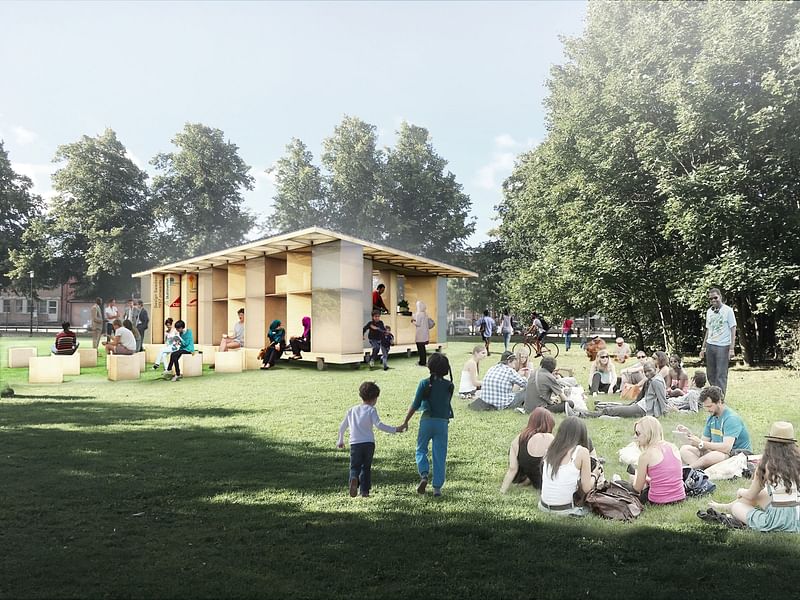
The temporary pavilion will be constructed in time for the Opportunity Space Festival on August 22 through September 2. The pavilion will be a venue for the Festival's daily programs, which focus on five categories: jobs and entrepreneurship; arts and culture; food; recreation; and democracy and human rights. More than 25 city agencies, companies, and NGOs in Malmö will participate. The Festival programs will be officially announced during a preview event in Malmö on May 30.
Two other teams also received honors in the flash competition: The Operating System team (Henry Stephens, architect, Copenhagen; Hannes Frykholm, architect, SAR/MSA; PhD Researcher at KTH School of Architecture in Stockholm; Nick Roberts, architect, Amsterdam) placed second “for its flexible, modular system that could be configured in literally hundreds of ways to support a wide range of social encounters and programs.”
In third place, the Circle of Friends team (Ethem Erdogan, architect, SAR/MSA; Elias Lindhoff, architect, SAR/MSA; Anders Hellström, set designer and artist; all three are based in Stockholm) proposed “a series of easily transportable modules that echo traditional forms of Swedish performance spaces and park festival structures.”
More project images in the gallery below.
Images courtesy of Van Alen Institute.
RELATED COMPETITION Opportunity Space


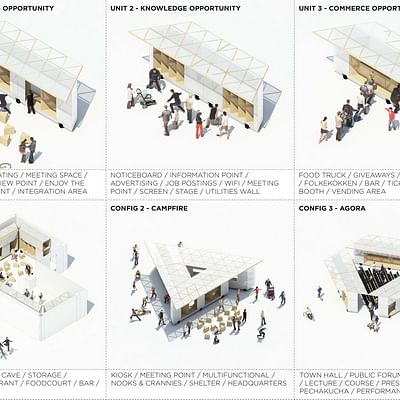

Share
0 Comments
Comment as :